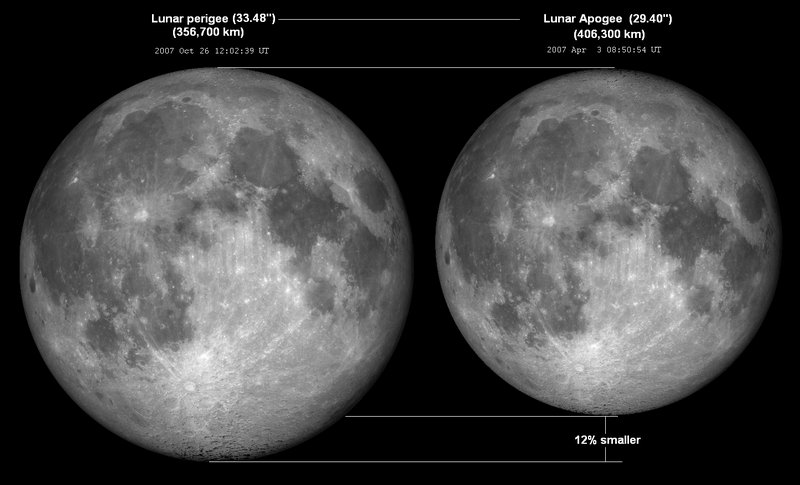|
All dates and times are Universal time (UTC); to convert to local time
add or subtract the difference between your time zone and UTC,
remembering to include any additional offset due to summer time for
dates when it is in effect. For each perigee and apogee
the distance in kilometres between the centres of the Earth
and Moon is given. Perigee and apogee distances are usually accurate
to within a few kilometres compared to values calculated with the
definitive ELP 2000-82 theory of the lunar orbit; the maximum error
over the years 1977 through 2022 is 12 km in perigee distance and
6 km at apogee.
The closest perigee and most distant apogee of the year are marked
with "++" if closer in time to full Moon or "--" if
closer to new Moon. Other close-to-maximum apogees and perigees are
flagged with a single character, again indicating the nearer phase.
Following the flags is the interval between the moment of perigee or
apogee and the closest new or full phase; extrema cluster on the
shorter intervals, with a smaller bias toward months surrounding the
Earth's perihelion in early January. "F" indicates the perigee or
apogee is closer to full Moon, and "N" that new Moon is closer. The
sign indicates whether the perigee or apogee is before ("-") or after
("+") the indicated phase, followed by the interval in days and hours.
Scan for plus signs to find "photo opportunities" where the Moon is
full close to apogee and perigee.
|
This table gives the time of all new and full Moons in the indicated
year, as well as the last phase of the preceding year and the first
phase of the next year.
Courtesy of http://www.fourmilab.ch/earthview/pacalc.html
|



